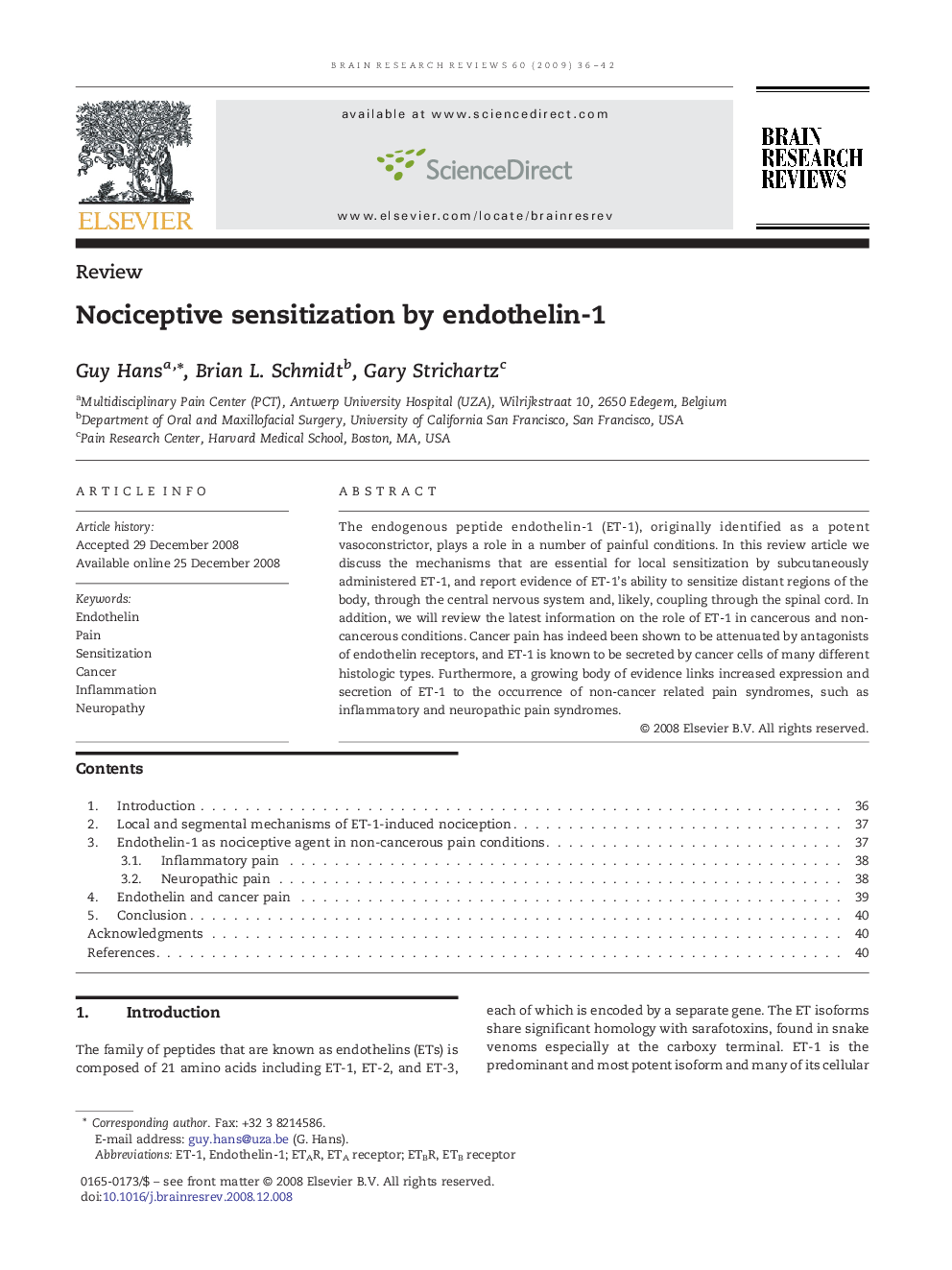| Article ID | Journal | Published Year | Pages | File Type |
|---|---|---|---|---|
| 4333804 | Brain Research Reviews | 2009 | 7 Pages |
The endogenous peptide endothelin-1 (ET-1), originally identified as a potent vasoconstrictor, plays a role in a number of painful conditions. In this review article we discuss the mechanisms that are essential for local sensitization by subcutaneously administered ET-1, and report evidence of ET-1's ability to sensitize distant regions of the body, through the central nervous system and, likely, coupling through the spinal cord. In addition, we will review the latest information on the role of ET-1 in cancerous and non-cancerous conditions. Cancer pain has indeed been shown to be attenuated by antagonists of endothelin receptors, and ET-1 is known to be secreted by cancer cells of many different histologic types. Furthermore, a growing body of evidence links increased expression and secretion of ET-1 to the occurrence of non-cancer related pain syndromes, such as inflammatory and neuropathic pain syndromes.
